- The mission of Virginia Western Community College is to provide comprehensive higher education and workforce training programs and services of superior quality that are affordable and accessible and that meet individual, business, and community needs in the Roanoke Valley and surrounding areas.Virginia Western endeavors to fulfill this mission by fostering the belief that all people should have an equal opportunity to develop their skills, knowledge, and values. The College promotes this concept by making quality higher education available through its open door admission policy, affordable tuition, financial assistance, and student support services.
School Highlights
Virginia Western Community College serves 8,097 students (23% of students are full-time).
The college's student:teacher ratio of 24:1 is higher than the state community college average of 23:1.
Minority enrollment is 31% of the student body (majority Black and Hispanic), which is less than the state average of 53%.
Quick Stats (2025)
- Enrollment: 8,097 students
- In-state tuition: $4,174
- Out-state tuition: $9,624
- Student:teacher ratio: 24:1
- Minority enrollment: 31%
- Source: Integrated Postsecondary Education Data System (IPEDS)
Top Rankings
Virginia Western Community College ranks among the top 20% of public schools in Virginia for:
School Overview
The teacher population of 332 teachers has stayed relatively flat over five years.
Virginia Western Community College
(VA) Community College Avg.
Carnegie Classification
Associate's Colleges: Mixed Transfer/Career & Technical-Mixed Traditional/Nontraditional
Associate's--Private For-profit
Institution Level
Less than 2 yrs
At least 2 but less than 4 years
Institution Control
Public
Private, non-profit
Total Faculty
332 staff
129 staff
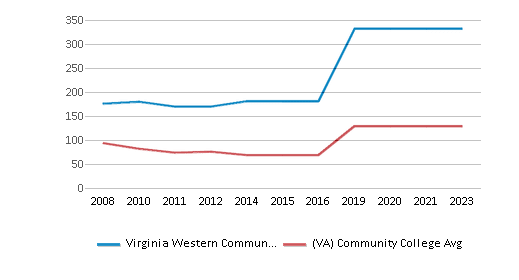
School Calendar
Student Body
The student population of Virginia Western Community College has grown by 28% over five years.
The student:teacher ratio of 24:1 has increased from 17:1 over five years.
The Virginia Western Community College diversity score of 0.50 is less than the state average of 0.71. The school's diversity has grown by 18% over five years.
Total Enrollment
8,097 students
1,350 students
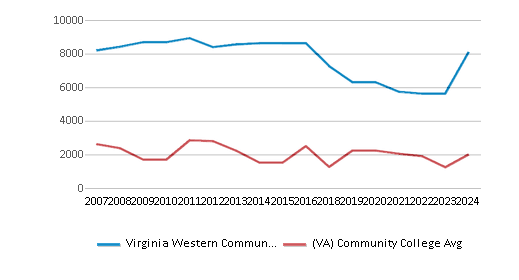
Student : Teacher Ratio
24:1
23:1
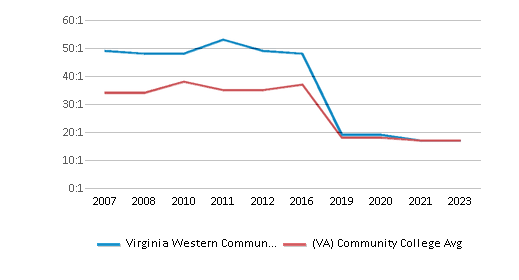
# Full-Time Students
1,837 students
637 students
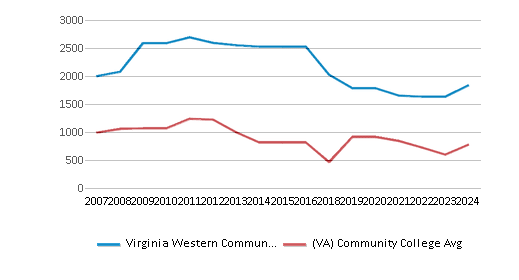
# Part-Time Students
6,260 students
971 students
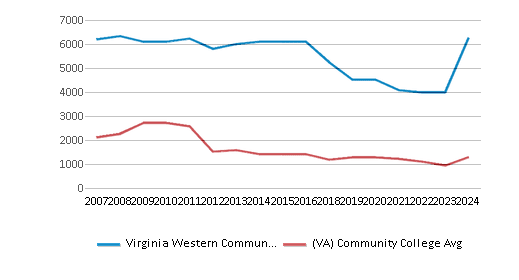
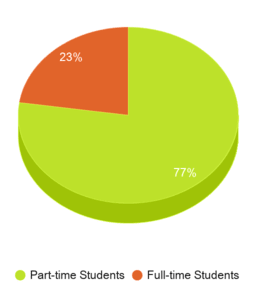

# Enrollment Undergraduate
809 students
314 students
# Full-Time Undergraduate Students
1,837 students
611 students
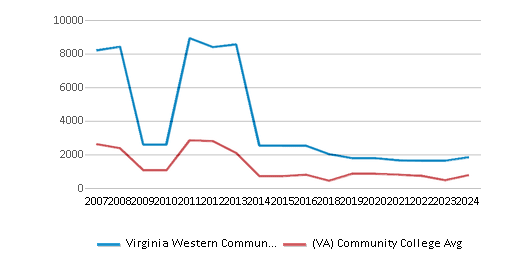
# Full-Time Graduate Students
n/a
158 students
# Part-Time Undergraduate Students
n/a
971 students
# Part-Time Graduate Students
n/a
61 students
Total Dormitory Capacity
n/a
476 students
% American Indian/Alaskan
n/a
n/a
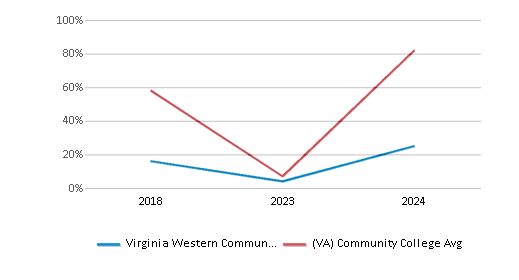
% Asian
4%
8%
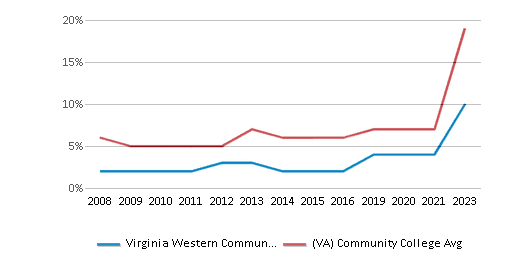
% Hispanic
7%
13%
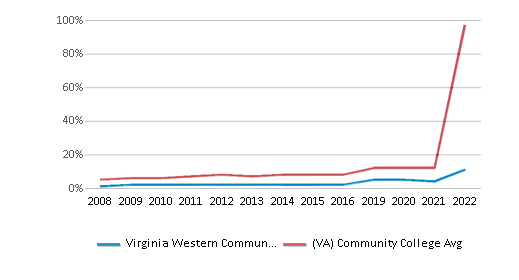
% Black
11%
21%

% White
69%
47%
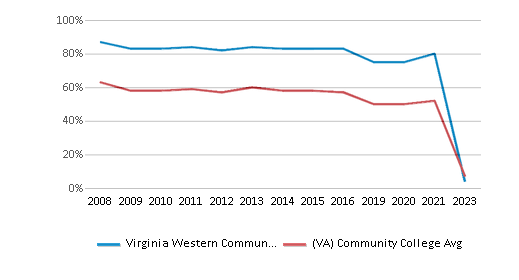
% Hawaiian
n/a
n/a
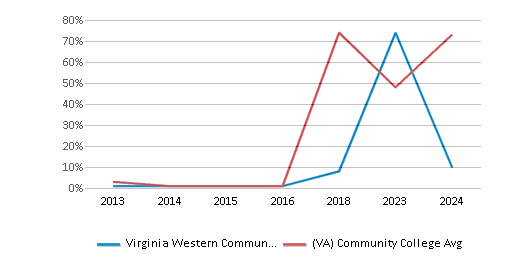
% Two or more races
4%
5%
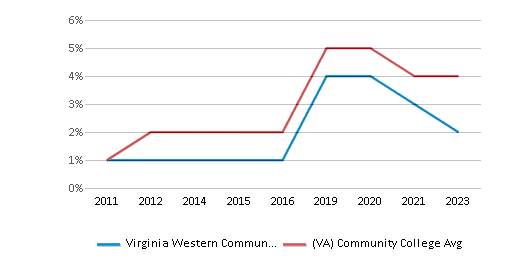
% Non Resident races
1%
2%
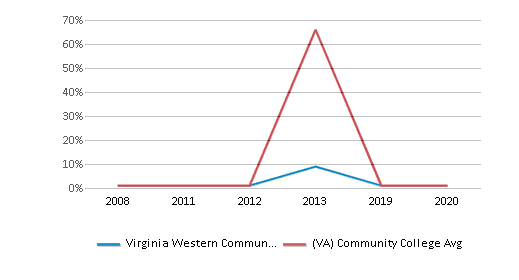
% Unknown races
3%
4%
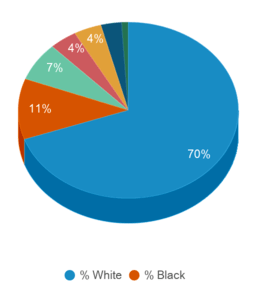
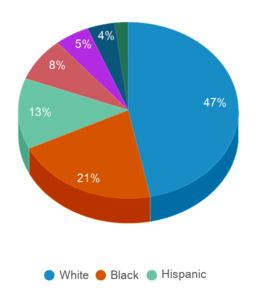
Diversity Score
0.50
0.71
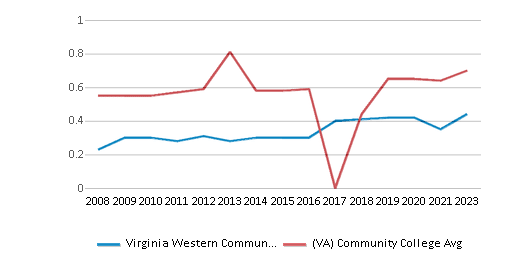
College Completion Rate (Students who graduate in less than 4 years)
0.3292%
0.4094%
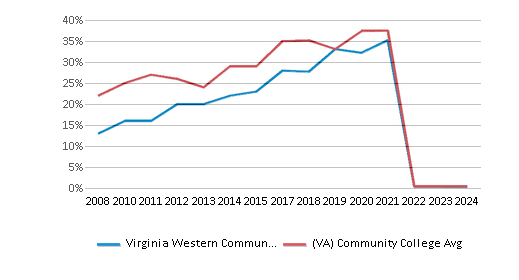
College Completion Rate (Students who graduate in 4 years or more than 4 years)
n/a
0.264%
Average Graduate Earnings (10 Years)
$31,400
$29,600
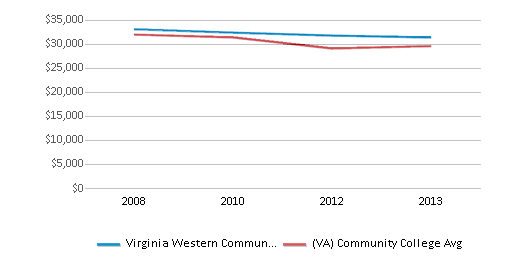
Tuition and Acceptance Rate
The public in-state tuition of $4,174 is more than the state average of $3,748. The in-state tuition has declined by 22% over four years.
The public out-state tuition of $9,624 is more than the state average of $8,977. The out-state tuition has declined by 15% over four years.
In-State Tuition Fees
$4,174
$3,748
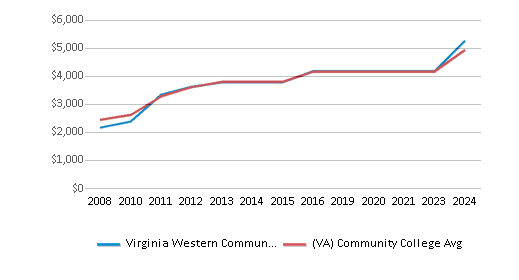
Out-State Tuition Fees
$9,624
$8,977
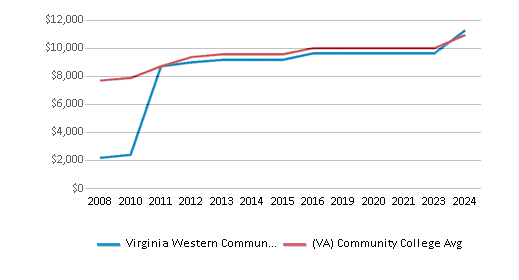
% Students Receiving Some Financial Aid
80%
78%
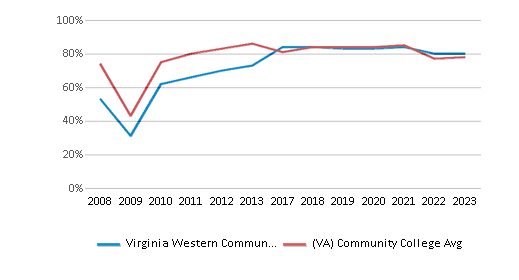
Median Debt for Graduates
$11,000
$10,500
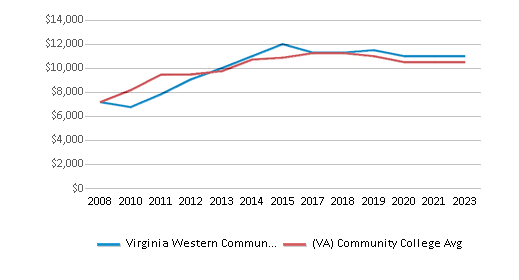
Median Debt for Dropouts
$5,500
$5,500
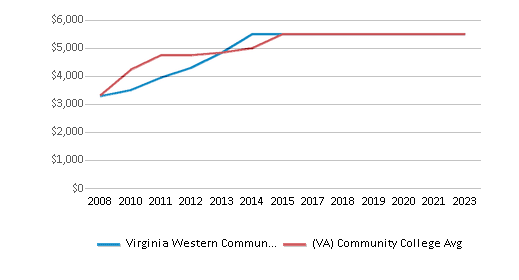
Acceptance Rate
n/a
59%
Source: 2024 (or latest year available) Integrated Postsecondary Education Data System (IPEDS)
School Notes
- Virginia Western Community College is a two-year public institution of higher education operating under a statewide system of community colleges. The College operates under the policies established by the State Board for Community Colleges and the Virginia Western Community College Board. The service region of the College includes Roanoke, Salem, Roanoke County, Craig County, southern Botetourt County, and northern Franklin County. Day, evening, and weekend classes are provided on a 70-acre campus located in Southwest Roanoke. Classes are also offered at off-campus locations in the area. The College was established in 1966 and has grown from an initial enrollment of 1,352 to its current enrollment of over 9,000. Virginia Western provides an extensive schedule of course offerings and programs to serve the diverse needs of students, including Associate Degree programs to prepare individuals for transfer as upper-division students to baccalaureate degree programs in four-year colleges and universities, Associate Degree programs to prepare individuals for careers as technical and paraprofessional workers and Certificate and Career Studies programs, which prepare individuals for careers as technicians, skilled, and semi-skilled workers. Virginia Western Community College is accredited by the Commission on Colleges of the Southern Association of Colleges and Schools to award associate degrees.
Frequently Asked Questions
How much does Virginia Western Community College cost?
Virginia Western Community College's tuition is approximately $4,174 for In-State students and $9,624 for Out-State students.
What is Virginia Western Community College's ranking?
Virginia Western Community College ranks among the top 20% of community college in Virginia for: Least expensive tuition and Largest student body.
Recent Articles

Obtaining Your Bachelor's Degree at a Community College
Explore the evolving landscape of community colleges offering bachelor's degrees, addressing affordability, accessibility, and workforce needs.

A to Z of Community College Certificates and Courses
From business and healthcare to technology and skilled trades, the article showcases the breadth of options available to students seeking to enhance their knowledge, develop new skills, or pursue career advancement.

What is a Community College?
This comprehensive guide explains what a community college is, its history, and its role in higher education. It covers the types of programs offered, differences from four-year colleges, benefits of attending, and important considerations for prospective students, providing valuable insights for those exploring educational options.











